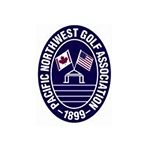Handicap Hub: What's the Right Score to Post?
 By Kelly Neely, Sr. Director of Handicapping
By Kelly Neely, Sr. Director of Handicapping
There's a lot for you to think about when playing golf: from understanding the layout of the hole, pondering which club to use, taking the proper grip and stance – you might even be bemoaning all those bunkers you need to navigate around the green! Of course, the Rules of Golf are uppermost on your mind especially when considering the format of the game you're playing.
But once you carry a USGA Handicap Index™, you also must consider what will make your score acceptable for handicap purposes. The USGA Handicap System has solutions to everyday situations that may not adhere exactly to the Rules of Golf, but where the basic principles are followed.
Remember – the Handicap System is compiling data as a predictor of your scoring habits. If all scores not made in 100% compliance with the Rules of Golf were tossed out, there would be far fewer scores to post – and thereby little evidence to support a Handicap Index. So, we need to be able to post scores even when we don't finish a hole, or, for that matter, when we don't finish a round.
While most golfers are familiar with the USGA Handicap System's Equitable Stroke Control (ESC) procedure indicating what maximum score they are allowed on any given hole, and also are aware of the "Par Plus" method of deriving a hole score when you don’t play a hole at all, fewer seem to be knowledgeable about the third way to adjust.
 In conversations with golfers, I find that most are either using their ESC maximum number, or par plus any handicap strokes allowed as all-inclusive methods of adjusting scores for handicap purposes. The little-known (or perhaps little understood) "Most Likely Score" adjustment is the only type that brings the golfers own good judgment into the end result.
In conversations with golfers, I find that most are either using their ESC maximum number, or par plus any handicap strokes allowed as all-inclusive methods of adjusting scores for handicap purposes. The little-known (or perhaps little understood) "Most Likely Score" adjustment is the only type that brings the golfers own good judgment into the end result.
Any time a player starts, but does not complete a hole or is conceded a stroke, they must record for handicap purposes their most likely score.
Most likely score is a judgment that the player must make based on their own game. It consists of the number of strokes already taken, plus the number of strokes needed to complete the hole from that position more than half the time. Your playing partner cannot help you to come up with this number! You must assess each situation in which you do not finish the hole based on what you can reasonably expect to score. (Section 4-1, USGA Handicap System Manual 2016-2017).
A good example of this is in match play. While the Rules of Golf do not insist that you keep a scorecard in match play, your Handicap Index is a good reason to carry a card – if only to help you keep track of your strokes and so that you can calculate the proper score to post once the competition is over.
Let's say you are playing a par 4-hole where you do not get any strokes. Your competitor sinks his double-bogey putt from 30 feet for a six. You are on the green in 3 but are still 25 feet from the hole. Your competitor unwisely concedes the hole allowing you to pick up. You won the hole in the competition, but what score do you record for handicapping purposes? That's where you must assess the situation. What is the likelihood that you'd sink that 25-footer for a par? Most likely you would at least take two strokes to get the ball into the hole so you should record a five.
But, what if it was a severe downhill putt and there was little likelihood that you could get the ball to stop within 3-feet? You are assessing the situation and thinking that you have a 1-100 chance of keeping it close and that you'd be thrilled if you could walk away with a 2-putt. In this case 3-putts would be more likely, so then you'd record a 6. And in the case that you were only 2 feet from the hole when it was conceded, you might record a 4.
From match play to stroke play, every situation is different. You must use your judgment to determine which rules of the Handicap system apply. In this instance, the rules regarding ESC would never apply when you start a hole and don't finish it (unless your most likely score happens to exceed your ESC score). Remember that the real purpose of ESC isn’t to tell us when to stop playing – it’s just a downward adjustment for handicap purposes when you go over your maximum allowed.
Two Important Points About Most Likely Score:
-
There is no limit to the number of unfinished holes a player may have in a round
-
Your Most Likely Score cannot exceed your ESC limit.
The USGA is allowing the player a judgment call whenever you start a hole but don't complete it, so let's exercise that right!








